Iris Flower Care: A Complete Growing Guide for Your Most Beautiful Spring Blooms Ever
With so many types of irises out there, it can be hard to know exactly how to care for them. This guide breaks it all down for the most beautiful irises ever.
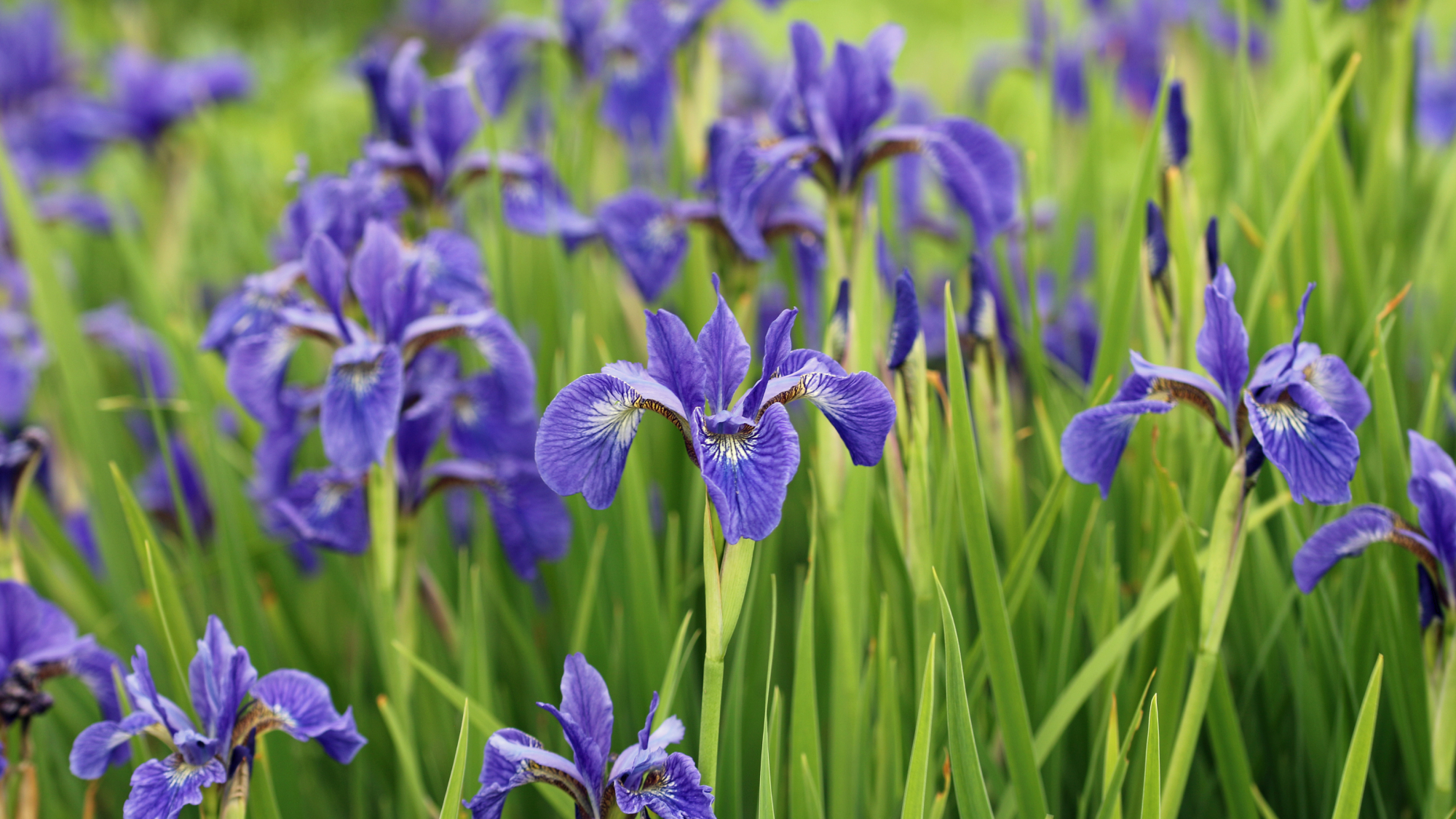

Becca Badgett
The iris (Iris spp.) is a classic spring flower garden staple. With its lovely arching petals and tall, stately foliage, it is a bona fide showstopper in the landscape. Since there are several different varieties that come in a stunning array of colors and sizes that means there’s a perfect type of iris for almost every garden.
Their intricate and exquisite blooms thrive in sunny to partially shaded areas of the landscape and provide beauty starting in spring and into early summer, depending on the variety and your growing zone. Luckily for gardeners, iris care is often minimal once plants are established. That's art of why they're one of the most beloved types of flowers in the garden.
Though care needs vary depending on the variety, there are a few basic guidelines you should follow to grow the best irises in your flower garden. I’ll walk you through the fundamentals of how to plant and care for irises in the garden, as well as some of the most common varieties to choose from for a truly beautiful flowerbed full of irises.
Quick Iris Facts
Botanical Name | Iris spp. |
Plant Type | Rhizome/bulb |
Height | 3 in–4 ft (7.5 cm–1.2 m) |
Spread | 6 in–2 ft (15 cm–0.6 m) |
Light | Full sun to part shade |
Soil | Moist; well-draining |
Hardiness | USDA 3-9 (Not in the US? Convert your zone) |
Flowers | Spring-summer |
Native range | Europe, Asia, temperate North America |
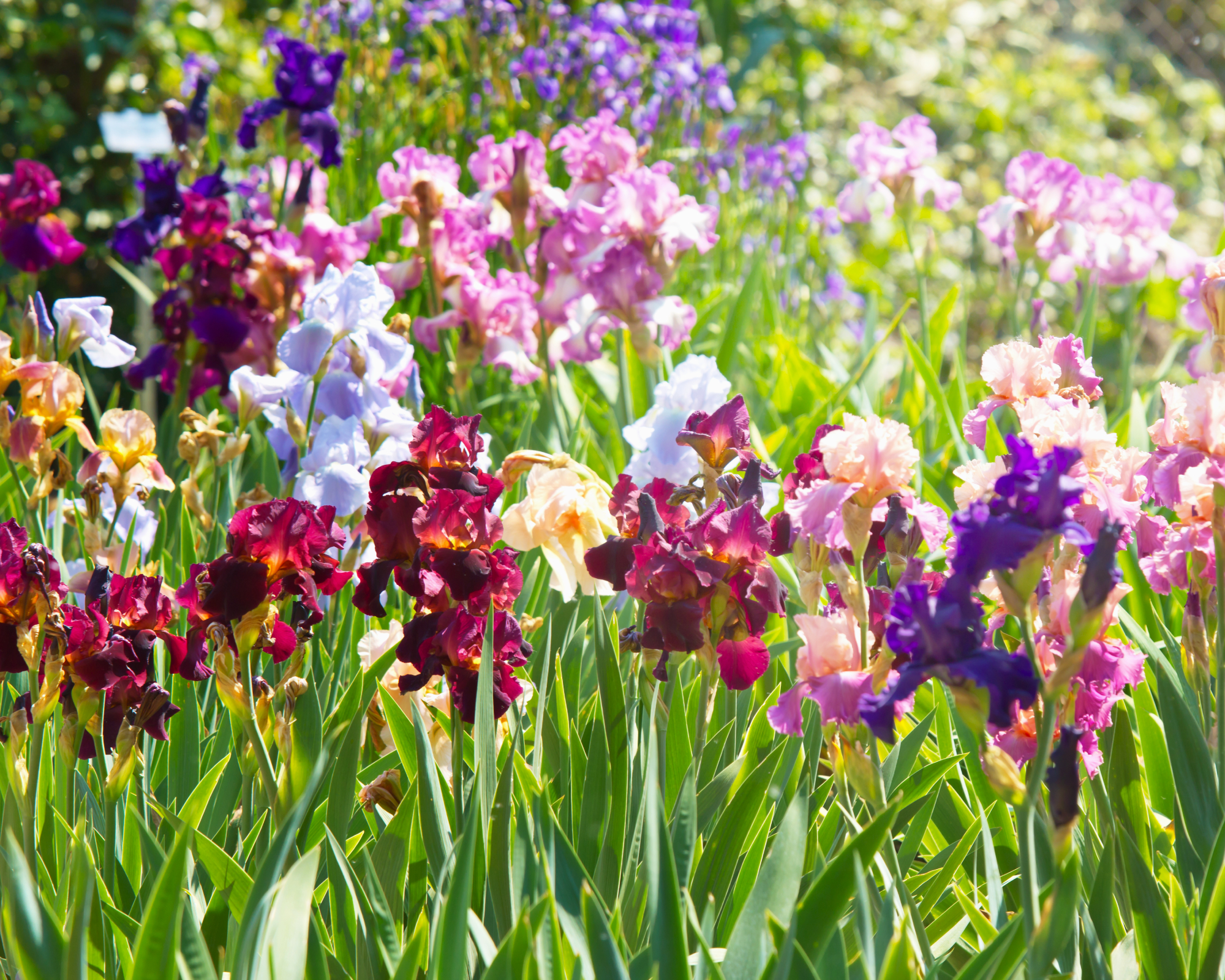
Planting Irises
Late summer to early fall is the ideal time to plant spring-blooming perennials like irises. Before planting, soak iris rhizomes in water for a few hours. Plant rhizomes in a sunny location with rich, well-draining soil for optimum flowering. Leave about 12-18 inches (30-46 cm) between plants to allow for good airflow and to reduce pest and disease problems.
Irises, especially bearded irises, prefer shallow planting. Dig a hole that’s 6-8 inches (15-20 cm) deep and create a mound in the center of the hole to ensure the roots are underground, but the top of the rhizome is level with the ground. Leave the top of the iris rhizome partially aboveground or just beneath the soil.
Planting too deep is one of the most common reasons for irises not flowering. Bearded iris rhizomes need to be baked in the sun in order to bloom well, so don’t mulch after planting either.
For Siberian irises, plant rhizomes 1-2 inches (2.5-5 cm) beneath the surface of the soil in a moist but well-draining area. This type of iris is perfect for planting around ponds or streams or in shadier parts of the garden that hold onto more moisture. Water well after planting and continue to water regularly until established. After one to two years, irises are relatively drought-tolerant, but still benefit from irrigation during hot, dry spells.
Sign up for the Gardening Know How newsletter today and receive a free copy of our e-book "How to Grow Delicious Tomatoes".
Dutch irises are a bit different from the bearded varieties and Siberian types because they grow from bulbs rather than rhizomes. Plant Dutch irises in fall as you would other spring-flowering bulbs. But these bulbs require deeper planting than other iris varieties. Plant them 3-5 inches (8-12 cm) below the surface in a sunny area with light, well-draining soil.
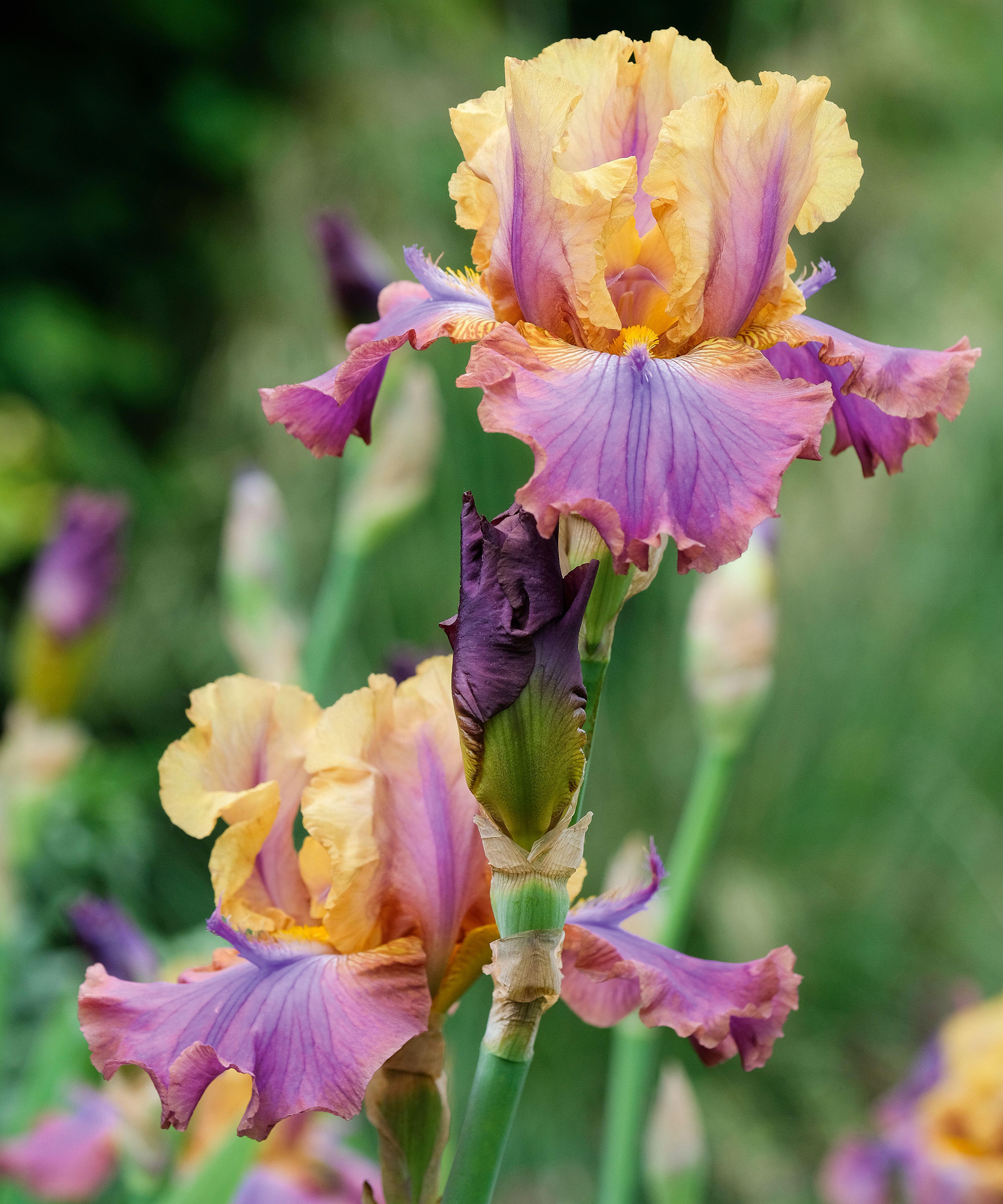
Best Soil for Irises
Irises prefer moist but well-draining soil. Bearded irises prefer a neutral to slightly alkaline pH soil, but Siberian irises do best in a neutral to slightly acidic soil. A loamy or sandy soil is ideal for most irises, as clay soil can hold onto too much moisture and rot rhizomes or bulbs.
To improve your soil for irises, mix in homemade compost or organic worm castings, which you can find on Amazon, before planting. If you add compost to established plants, be sure not to bury the tops of the rhizomes as that can diminish flowering.
Iris Light Needs
Bearded irises need full sun to thrive, but they can tolerate some shade. For the best blooms, however, ensure you plant irises in a location that receives at least 6 or more hours of direct full sunlight per day.
Siberian irises and Japanese irises can tolerate more shade than bearded varieties. As long as they receive at least 4 or more hours of sunlight per day, they will thrive. But the more sun, the better the blooms.
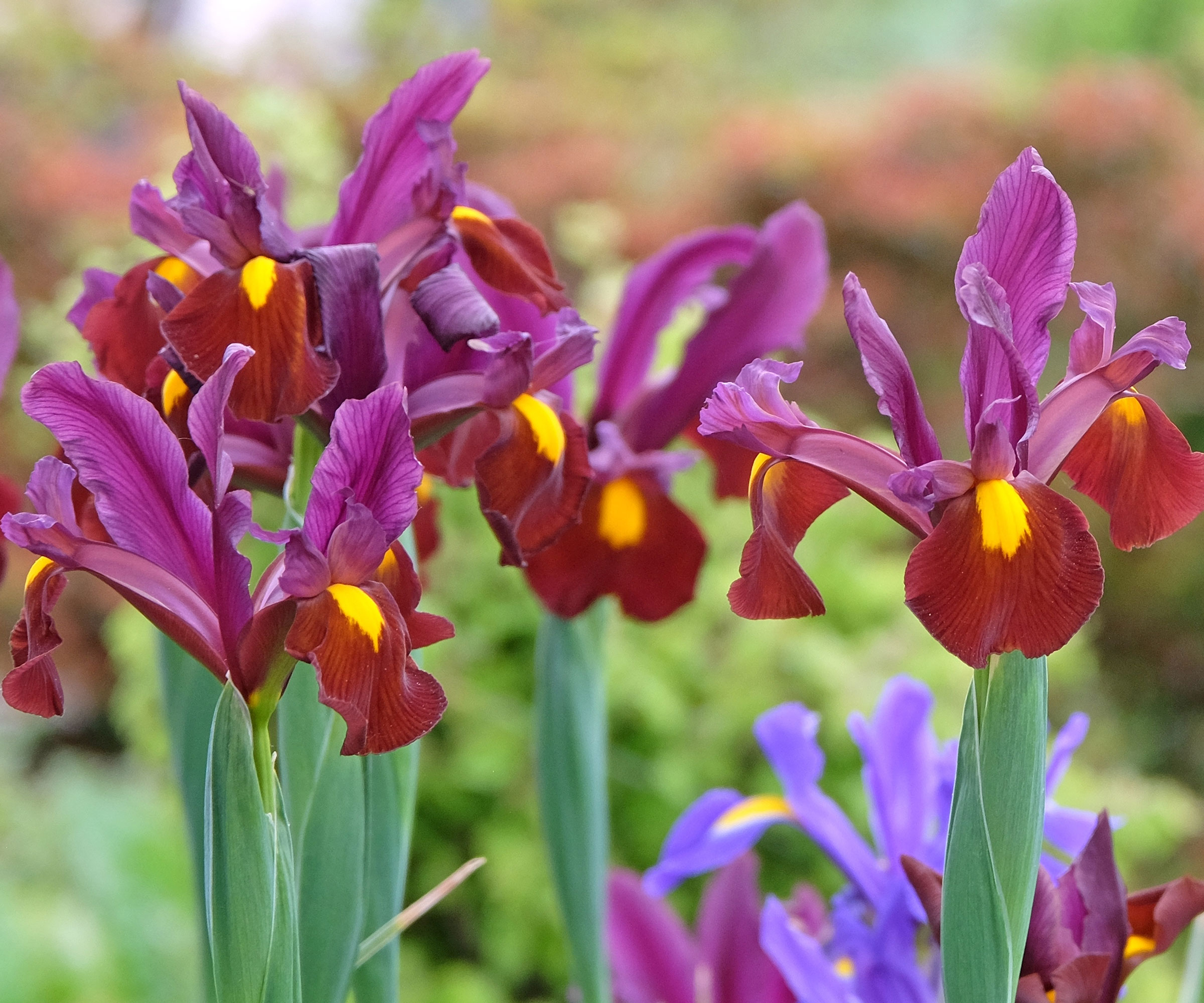
How to Care for Irises
Caring for irises is pretty basic, but there are some guidelines gardeners should follow for the best blooms and long-lasting plants that will beautify your garden for years to come.
Watering Irises
Water irises thoroughly after planting or transplanting and continue to water regularly for the first growing season until plants are established.
Once established, irises – particularly bearded varieties – are drought-tolerant and are good plants for a xeriscape garden. But keep in mind, even drought-tolerant plants benefit from occasional watering. Provide additional water during hot, dry periods or when you see foliage wilt.
Siberian irises are water-lovers, so they require more frequent irrigation than their bearded cousins. Ideally, plant them in a location near water, like a wildlife pond or natural stream. They are also well-suited to rain gardens.
Siberian irises, despite their love for moist soil, are still relatively drought-tolerant once established. But it’s best to provide them with some form of irrigation during the summer. My irises thrive when I water them with this drip irrigation system you can get at the Home Depot. It provides consistent, directed moisture right at the roots where plants need it.
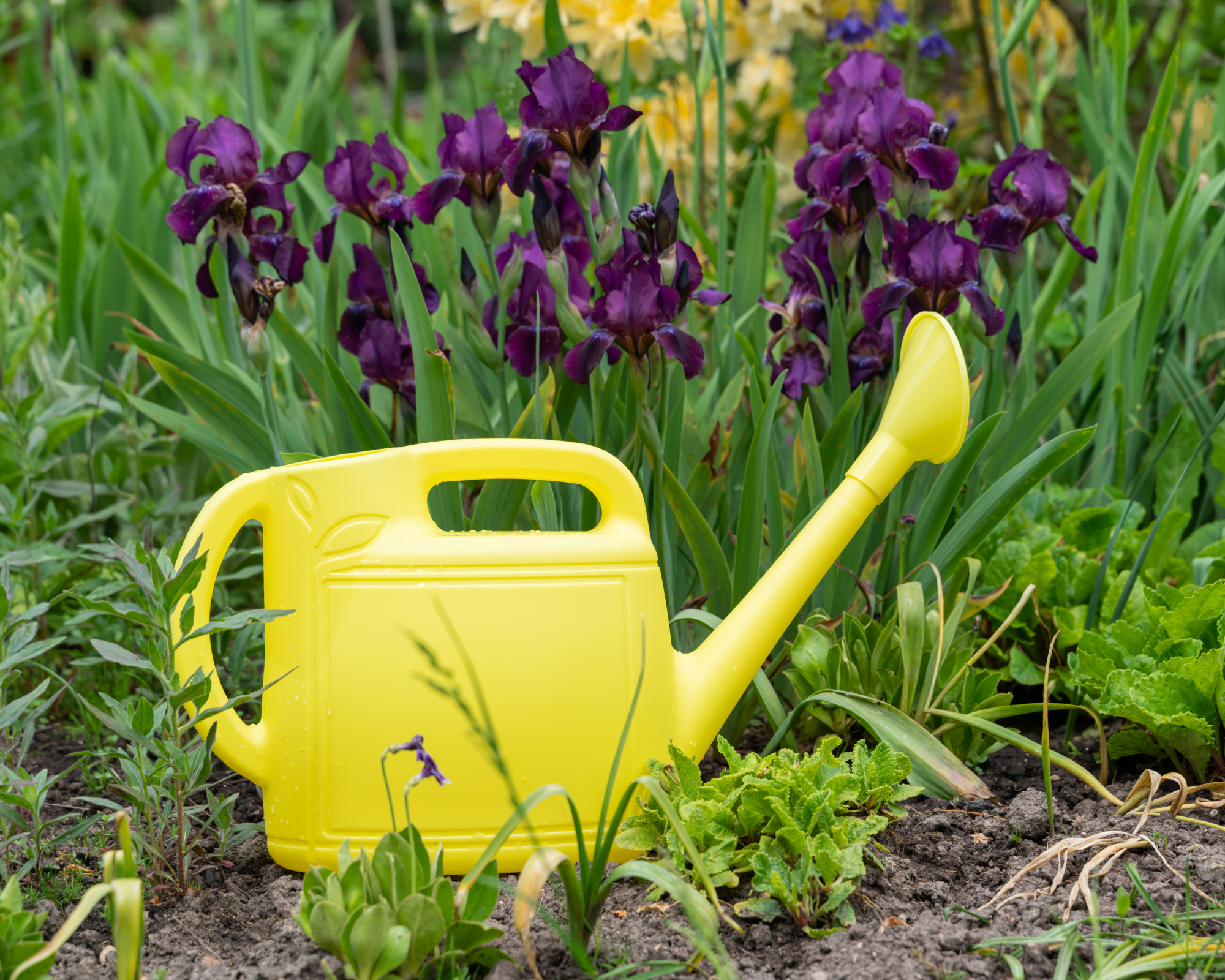
Best Fertilizer for Irises
Bearded irises require less fertilizer than their beardless counterparts. Be careful not to let fertilizer touch the rhizomes when feeding irises. It’s best to add a low nitrogen fertilizer, like this one from Amazon, to your garden bed or planting holes when you are first planting new irises or transplants. Higher levels of phosphorus and potassium will help your irises produce more blooms.
But be careful not to overfeed your irises. You can reapply fertilizer in the spring before blooms appear or side-dress plants with compost. Irises don’t need that much fertilizer, though, to thrive.
They are generally low-maintenance and will continue to bloom abundantly as long as you site them well, don’t plant them too deep, and divide plants when they start to look bare in the center or when blooms diminish.
Mulching Irises
Bearded iris rhizomes need to be close to the surface of the soil to bloom well and thrive, so don’t mulch over top of rhizomes or else risk losing blooms. If you want to mulch to suppress weeds around bearded irises, just make sure the pull back mulch from the top of the rhizome.
Siberian and Japanese irises are moisture-lovers, so they benefit from a light layer of organic mulch, like this one from Amazon, to help keep soil moist. But root rot can still be an issue for these varieties, so don’t pile mulch too high or else you can cause issues.
Pruning Irises
There are two main ways to prune irises: deadheading and cutting back for winter. Neither is necessary for irises to grow or bloom, but proper pruning can help plants thrive and bloom more.
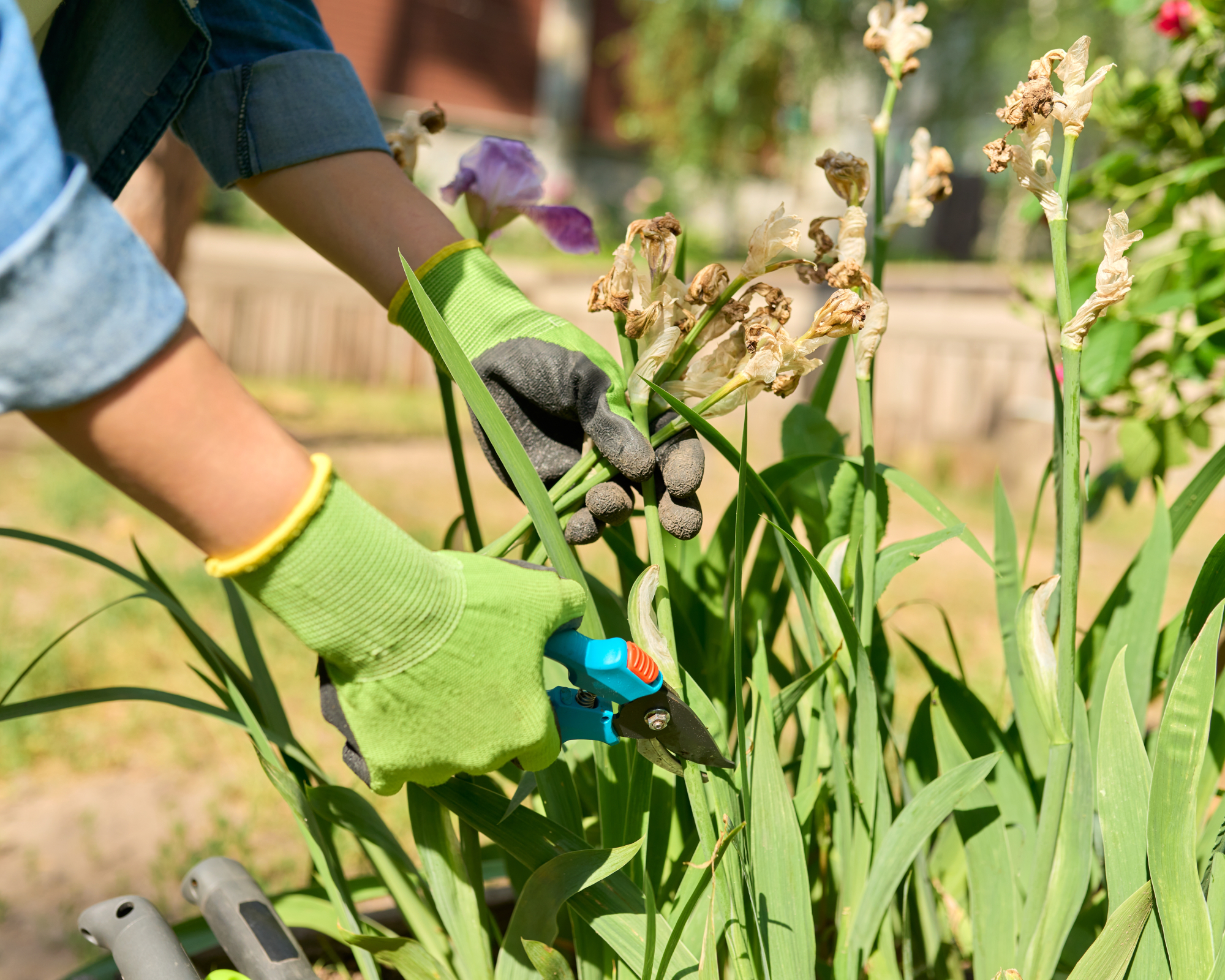
Deadheading Spent Blooms
Deadheading Siberian irises and bearded irises is not necessary. The seedpods can add unique beauty and interest to the garden in the late summer and autumn.
However, leaving seedpods may direct energy away from the plant roots. To get bigger blooms next year, deadheading is a good idea. This allows irises to send all their energy back into the roots and rhizome instead of expending it on producing seeds.
Preparing Foliage for Winter
The tall, strappy leaves of the iris look beautiful and can add a lovely architectural element to the garden even after blooms fade. And as with many spring blooms, the foliage sends nutrients to the rhizome for next year's flowers. So while many gardeners wish to immediately remove foliage once flowering is done, resist the urge because the leaves are helping build up next year’s blooms.
Enjoy the foliage in the summer and then cut back leaves after the first frost or once they yellow in fall. Leave at least 1-2 inches (2.5-5 cm) of foliage when you prune irises. You can also leave foliage alone for winter and cut back dead leaves in spring when new growth begins to emerge.
Iris Care Calendar
Spring | Summer | Fall | Winter | |
|---|---|---|---|---|
Fertilize | ✓ | Row 0 - Cell 2 | Row 0 - Cell 3 | Row 0 - Cell 4 |
Deadhead Blooms | Row 1 - Cell 1 | ✓ | Row 1 - Cell 3 | Row 1 - Cell 4 |
Divide & Transplant | Row 2 - Cell 1 | Row 2 - Cell 2 | ✓ | Row 2 - Cell 4 |
Cut Back Foliage | Row 3 - Cell 1 | Row 3 - Cell 2 | ✓ | Row 3 - Cell 4 |
Check for Borers | ✓ | ✓ | Row 4 - Cell 3 | Row 4 - Cell 4 |
Types of Irises
There are a wide range of different types of irises that originate from all over the world. Let's take a look at broad categories of irises as well as some of the specific varieties.
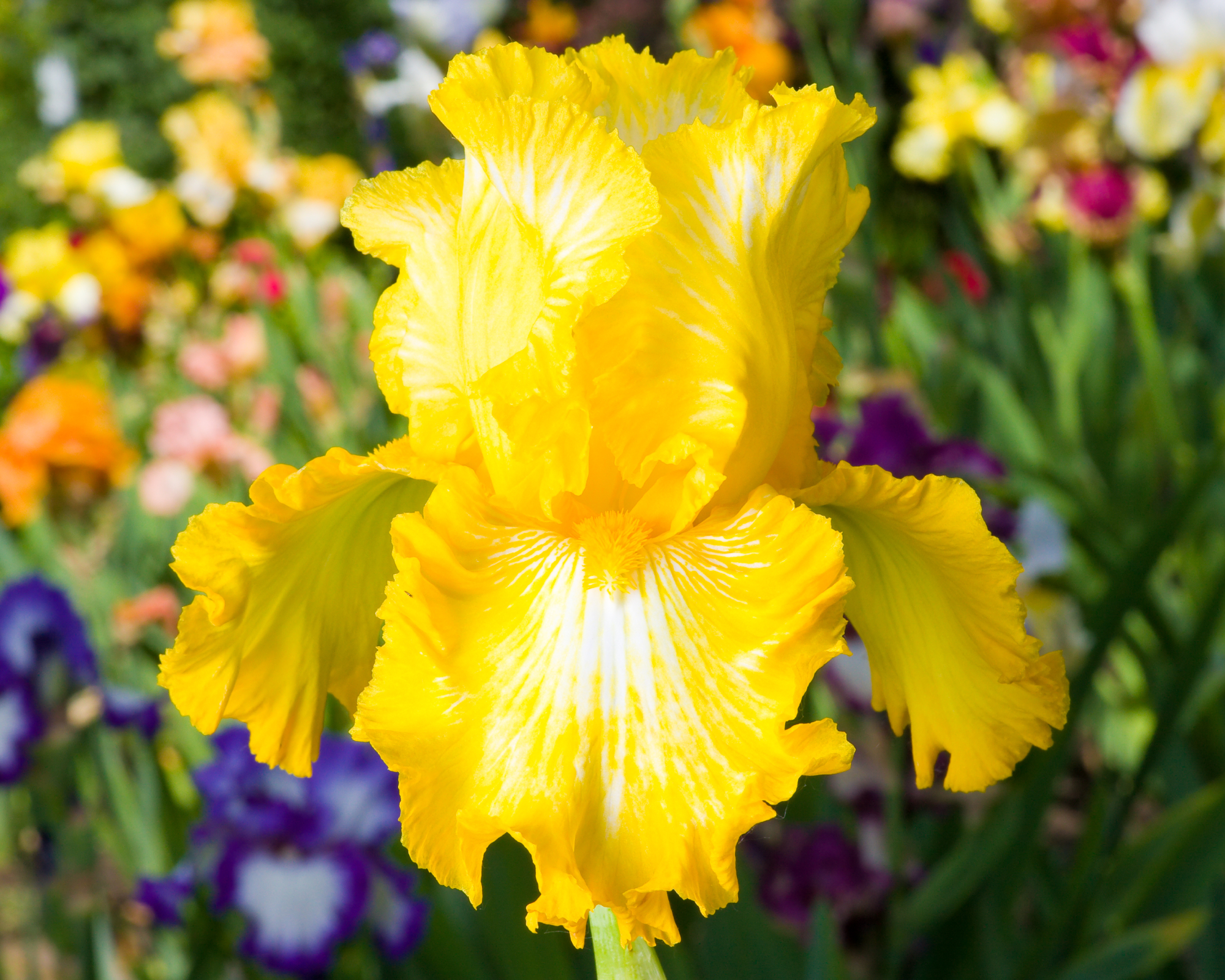
Bearded Irises
The most common type of iris in the United States is the bearded iris, sometimes called the German bearded iris (Iris germanica). These beautiful spring bloomers are native to central and southern Europe. There are reblooming cultivars that put out a second show of flowers in summer, fall, or winter.
The height of the bearded iris plant ranges from 3 inches (7.6 cm) for the shortest dwarf iris flowers to 4 feet (1.2 m) for the tallest of the tall bearded iris. There are several classifications of bearded irises, divided by size. Here are the different types of bearded irises by height, from shortest to tallest:
- Miniature Dwarf Bearded (MDB) are the smallest type of bearded iris. They grow up to 8 inches (20 cm) tall.
- Standard Dwarf Bearded (SDB) are a little bit larger. They can grow up to 8-16 inches (20-41 cm) tall.
- Intermediate Bearded (IB) reach heights of 16-28 inches (41-71 cm), making them a nice size for garden borders.
- Border Bearded (BB) irises are the same size as intermediate bearded irises, but come in a variety of attractive ruffled flower forms.
- Miniature Tall Bearded (MTB) irises are taller but daintier than other large varieties. They grow between 16-28 inches (41-71 cm) high and have delicate blooms that float atop slender stems, making them perfect for spring bouquets and arrangements.
- Tall Bearded (TB) irises are the largest bearded variety. They grow 28 inches (71 cm) high and above.
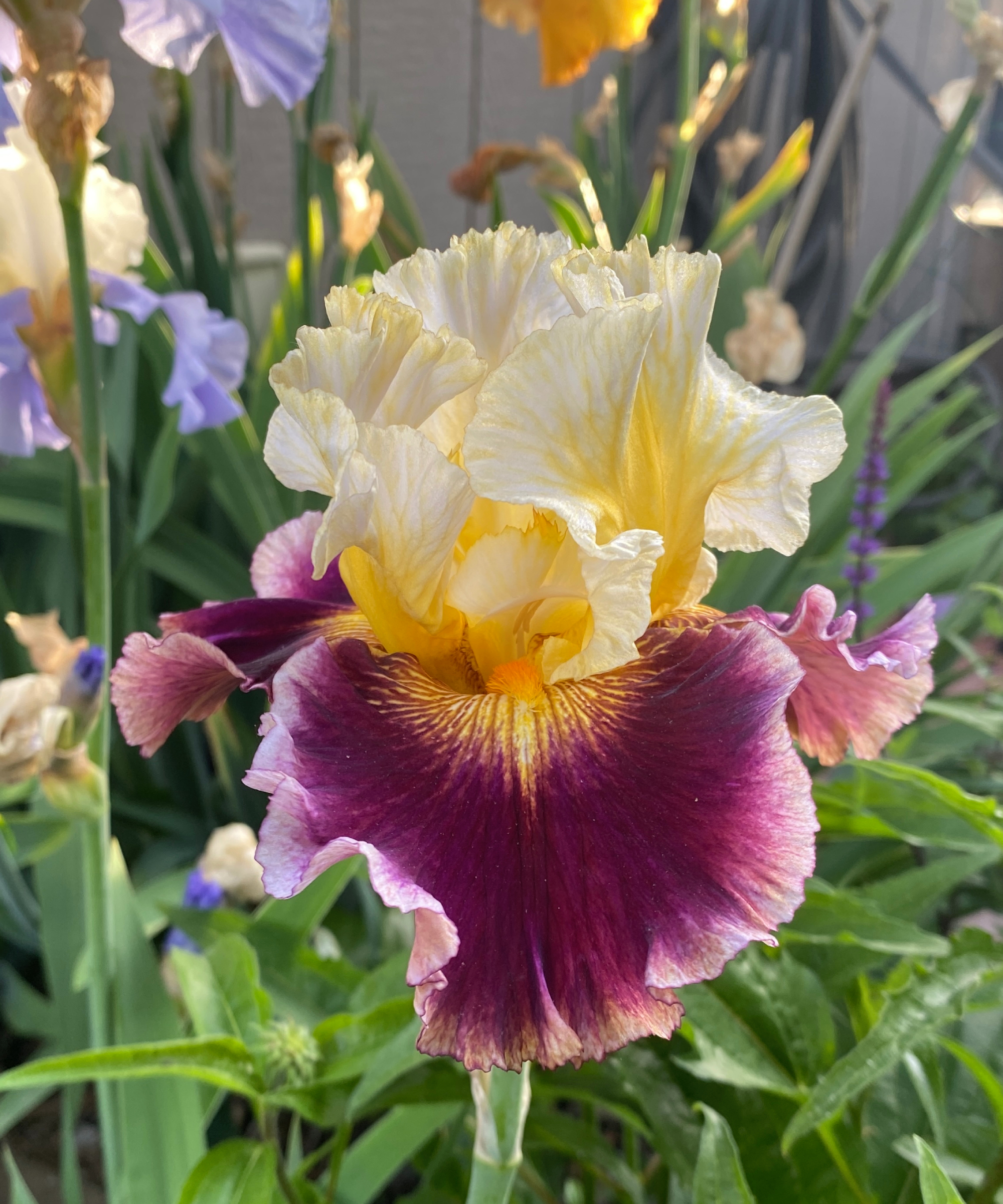
Beardless Irises
Beardless iris flowers bloom in shades of purple, blue, white, and yellow and include many hybridized versions that are multi-colored. There are a several different types of beardless irises, including some that are native to North America. Here are some of the most common types:
- Siberian Iris (Iris sibirica): Known for their slender foliage and cold hardiness, Siberian irises are more dainty than bearded varieties. They come in a plethora of colors, but the traditional type is a rich purple with yellow and white markings. For a pop of spring color, try the ‘Butter and Sugar' cultivar, which has soft yellow and white flowers.
- Japanese Iris (Iris ensata): Japanese irises have beautiful, butterfly-like blooms that are flatter than other iris varieties. They come in a wide range of colors and prefer moist, acidic soils and partial shade. Japanese irises bloom later than bearded varieties, so they’re a great addition to the midsummer garden.
- Dutch Iris (Iris x hollandica): Dutch irises are not like other iris varieties because they grow from bulbs rather than rhizomes. You plant iris bulbs in the fall like other spring-blooming bulbs, such as tulips and daffodils. Then in the spring, they put out lovely, delicate blooms that are perfect for cut flower arrangements.
- Louisiana Iris: Louisiana irises are a group of irises that are native to the southern United States. They come in a huge assortment of colors and make great additions to native plant gardens in that part of the country. For a truly stunning iris variety, try the ‘Black Gamecock' iris. It’s such a deep purple it almost appears black.
- Spuria Iris (Iris spuria): The Spuria iris, planted along with the Siberian iris, offers blooms later in the spring once the bearded iris is finished blooming. Many of the flowers on spuria irises are ruffled and include a draping set of three outer sepals called falls.
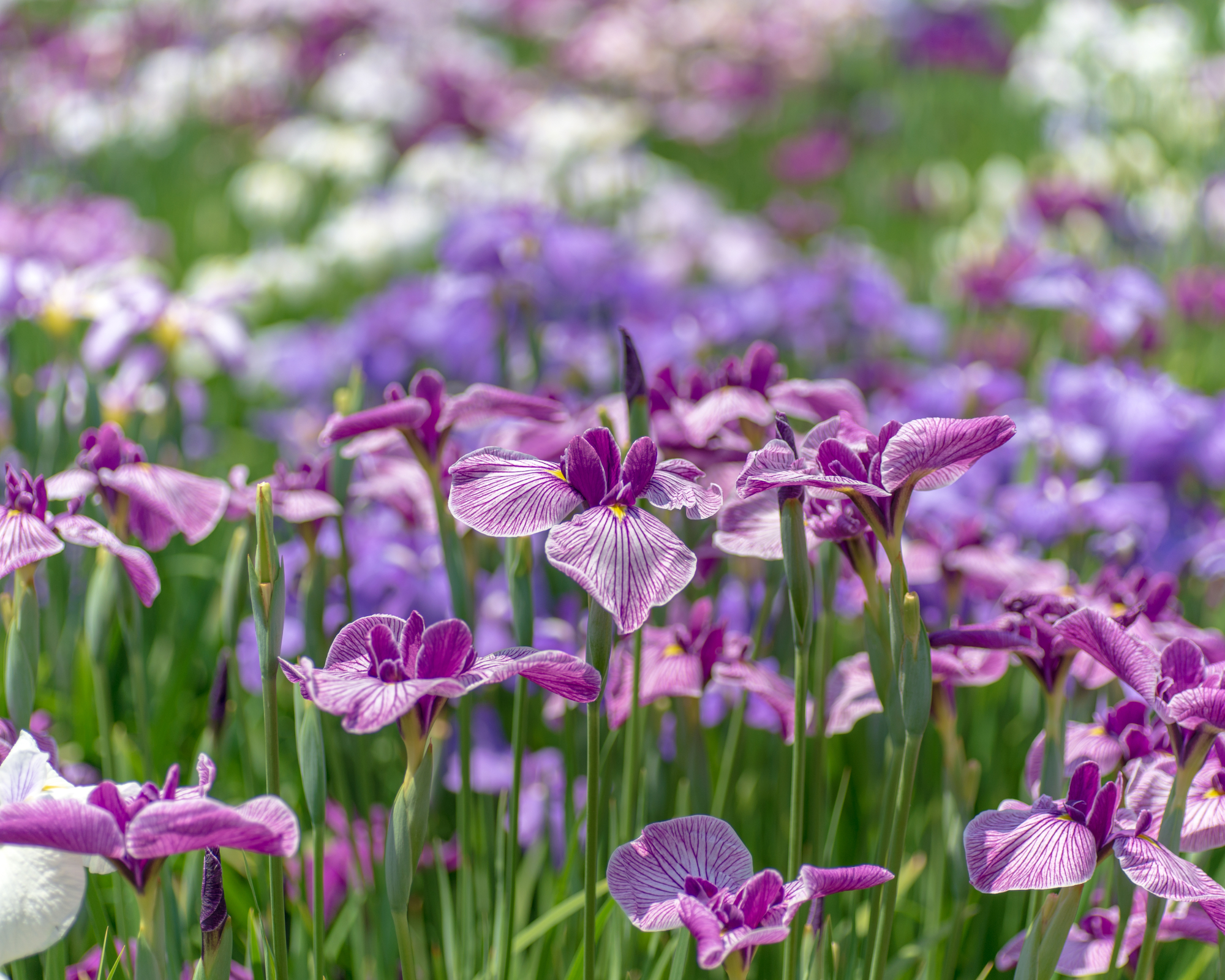
Aril Irises
There are two different types of aril irises that are native to the Near East. They are Oncocyclus irises and Regelia irises. They are both bearded, but the beard is not as prominent as it is on the bearded iris. There are also arilbred irises (AB), which are hybrids of aril irises crossed with bearded irises.
Aril irises come in a wide array of colors and they have large, impressive blooms. However, these irises are extremely difficult to grow in most parts of the United States, unless you live in a very hot and dry location similar to their native Near East climate.
Shop a huge array of amazing, high-quality irises from Wayside Gardens.
Propagating Irises
The primary method of propagating irises is division. Dividing plants regularly every few years is part of proper iris care as well as a great way to expand your collection of plants.
How to Divide and Transplant Irises
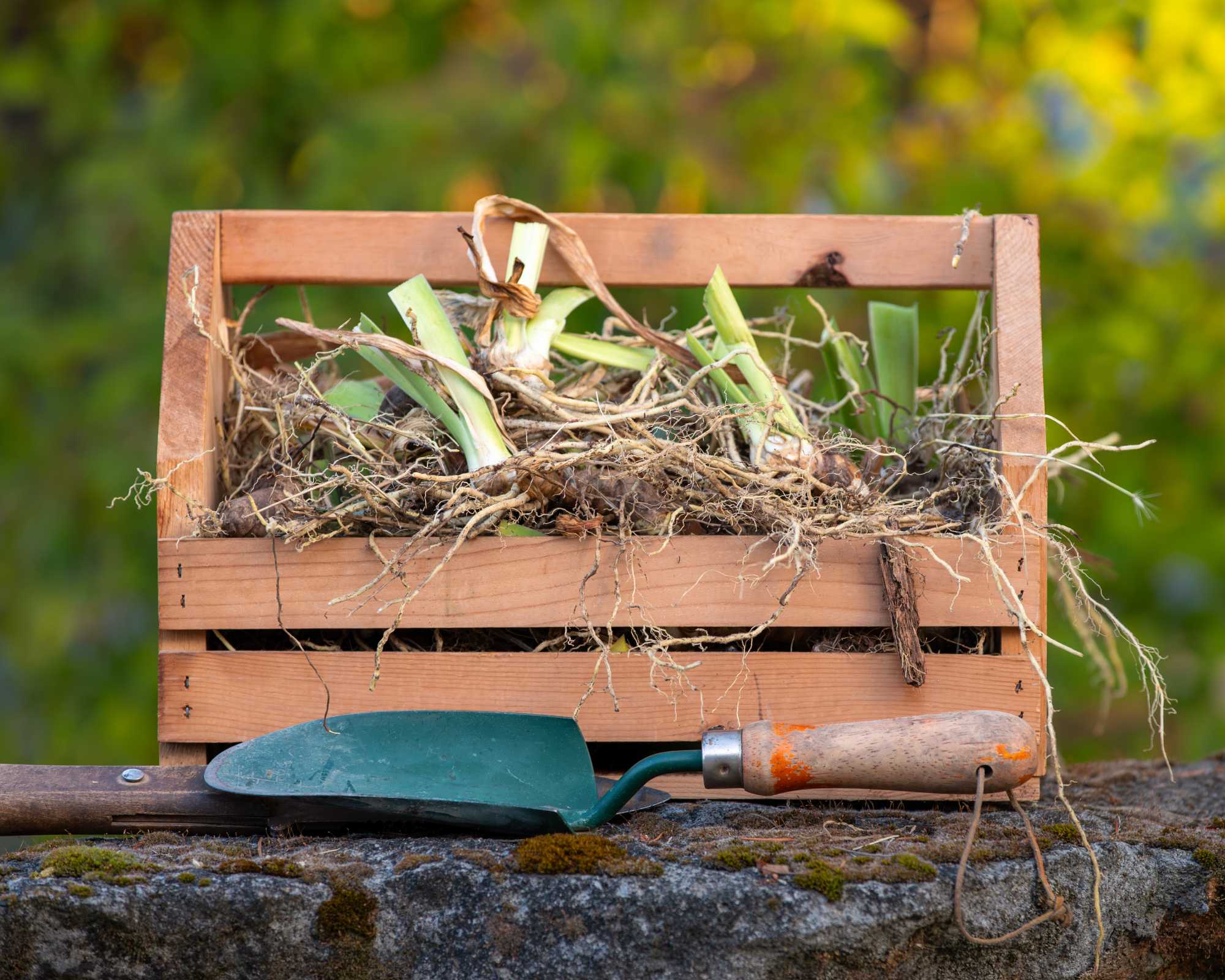
Good iris care includes dividing plants every 3 to 5 years to ensure continued blooms. Iris plants are abundant multipliers, but once the rhizomes become crowded, flowers may diminish.
A clear sign it’s time to divide your iris is when it develops a hole in the center of the plant. Overgrown irises stop producing leaves and flowers in the center of the plant and only grow around the edges of the clump.
When this happens, first cut back foliage to about 6 inches (15 cm). Late summer to early fall is the best time to divide irises. Wait until the heat of summer has passed, but before freezing overnight temperatures begin.
Use a clean, sharp shovel to dig up the entire iris and inspect it for any pests or diseases. Remove any infected or infested parts of your iris then divide the healthy parts of the plant into smaller sections. Make sure to include an entire rhizome in each newly divided iris clump. Replant the divisions the same way you would plant a new iris. Water thoroughly.
Iris Problems
Irises are generally free of problems and easy to grow, but there are a few issues gardeners should know about. The most common and worst iris pest is the iris borer. The adult moths lay eggs on iris foliage in late summer. The larvae hatch and travel down the leaves and into the rhizomes in spring, where they begin to feed.
Foliage affected by iris borers will turn yellow and flowerbuds will become brown and watery. Borers can cause the rhizome to rot and die. To prevent this pest, clean up foliage in late winter or early spring before temperatures are consistently above freezing to get rid of any overwintering borer larvae. Eggs begin to hatch around 72ºF (22ºC).
Beneficial nematodes, which you can buy on Amazon, also attack larvae in the spring and can help protect irises from infestations.
The most common disease that impacts irises is bacterial soft rot. Iris borers make plants more susceptible to soft rot. The bacteria enters the plant’s rhizomes via cracks, cuts, and wounds from borers.
The rhizome becomes mushy and smells rotten. To control bacterial soft rot, dig up the affected iris and remove any diseased parts. Replant the healthy sections or throw out the entire plant if it is entirely infected.

Laura Walters is a Content Editor who joined Gardening Know How in 2021. With a BFA in Electronic Media from the University of Cincinnati, a certificate in Writing for Television from UCLA, and a background in documentary filmmaking and local news, Laura loves providing gardeners with all the know how they need to succeed, in an easy and entertaining format. Laura lives in Southwest Ohio, where she's been gardening for ten years, and she spends her summers on a lake in Northern Michigan. It’s hard to leave her perennial garden at home, but she has a rustic (aka overcrowded) vegetable patch on a piece of land up north. She never thought when she was growing vegetables in her college dorm room, that one day she would get paid to read and write about her favorite hobby.
- Becca BadgettWriter